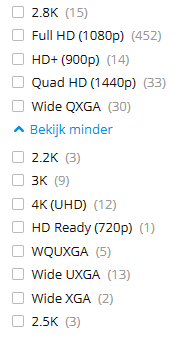Reply 20 of 28, by Jo22
- Rank
- l33t++
mkarcher wrote on 2023-04-09, 08:58:Jo22 wrote on 2023-04-09, 07:33:To programmers, using small or low-res 640x480 monitors must have been borderline already by the late 80s.
-I mean, most DOS tools or IDEs had an optional 43 line/50 line mode, for example (DOS Shell, VBDOS).The 43-line mode is borrowed from EGA and uses an 8x8 character box in a 640x350 pixel screen. The 50-line mode has the same timing as the 25-line mode, i.e. 720x400, but with an 9x8 character box instead of an 9x16 character box. So these two modes are not an example of anything requiring 480 lines, so these character modes still displayed at the nice 70Hz of VGA.
True. That goes without saying, I assume. Most of us know the basics of EGA/VGA about good enough, I think.
The statement about hi-res text modes was in context with monitor fidelity.
About the level of professionalism, if we will.
VGA as such differed from its predecessors in terms of the paradigm.
Before VGA, it was about a low colour count but crisp/hires graphics and digital monitors.
When VGA/MCGA was introduced, the consumer/entertainment sector moved on to big colour count and blurry analogue monitors. 320x200 had to look good, the rest was secondary. They were also cheaply to produce, with the 31KHz rate being the most challenging part, due to the need for good transformers.
And multi-sync or dual-frequency monitors differed from this, since they weren't consumer grade items. Their screen masks were typically better, they had less colour convergence issues etc. In other words, their overall visual quality was more like that of previous EGA screens or broadcast monitors.
Edit: Edited.
Edit: That's what I had in mind when I meant consumer monitors:
https://www.youtube.com/watch?v=m79HxULt3O8&p … hIDY0MHg0ODA%3D
Low-res, QVGA/MCGA games like Donkey Island looked nice on low quality monitors.
But text was rather hard to read, anything above 80x25 was almost indecipherable.
"Time, it seems, doesn't flow. For some it's fast, for some it's slow.
In what to one race is no time at all, another race can rise and fall..." - The Minstrel
//My video channel//

